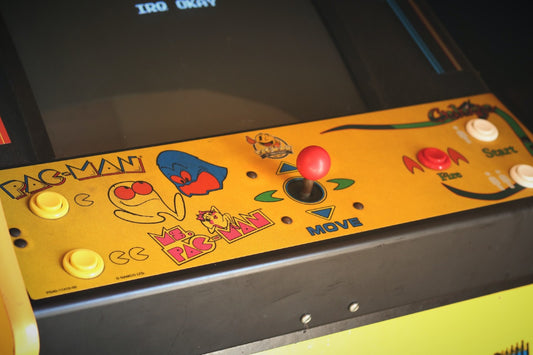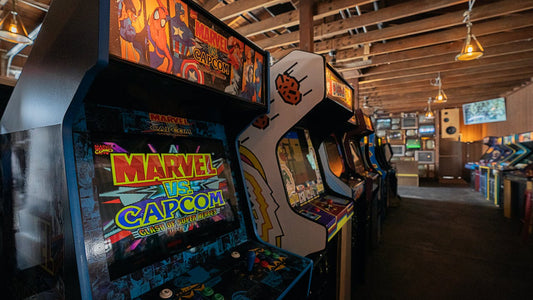Pong - Early Arcade History 1972
Pong
1972 was a pivotal year in the development of the gaming market. In this year, Atari was formed and released their first gaming cabinet – Pong. Pong arguably marks the turning point for arcade games as it is held up to be one of the first video-games to reach mainstream channels and such heights of popularity; in 1975 was even released on a smaller console so that it was widely available for people to play at home.
Pong is a two player game that imitates table tennis, the player can either play against the computer or another player. The game-play is simple, navigating the paddle to hit a ball; and with an overall goal of reaching 11 points before your rival.
The history of Pong begins with the creation of Atari itself. Nolan Bushnell (founder of Atari), tasked Allan Alcorn (an intern) to familiarise himself with a simple table tennis game to practice video game design, as Alcorn had no previous background in video games. Alcorn believed that the game that Bushnell had asked him to design would be overly simplistic and therefore boring to the player, leading to the introduction of other features to make the game more interesting. Through dividing the paddle into 8 segments it allowed for a more accurate system of changing the angle of the ball (90° angle from the middle of the paddle and smaller angles from the outer segments). Alcorn also added the feature that would allow the ball to quicken as the length of the game increased, and if the player missed the ball then the speed would be reset, adding a level of difficulty to the otherwise simplistic game.
After Alcorn had finished construction of the prototype, Bushnell and Dabney inspected Pong and were so impressed with it that they decided to test the marketability of the game. Leading to the installation of the prototype at Andy Capp’s Tavern, a local bar, where it was placed with the entertainment machines. Due to the popularity of Pong, Bushnell pitched the game to Bally and Midway Manufacturing, only a week after releasing the prototype.
The great reputation of the game is evident, as by 1973, Pong was being distributed all around the world. Additionally, by late March (1973) it is estimated that 8,000 – 10,000 Pong machines were sold, and due to the popular demand, a home console was created in 1975. The success of the smaller console mirrored the demand of the arcade cabinet, making it Sears’ most successful product of the time and selling over 15,000 of the units over the holiday season. Furthermore, the success of Pong led to Atari creating variants of the game such as Pong Doubles, Pin Pong, and many more.
However, one problem that Atari faced is the lack of copyright on the game. Moreover, the success of Pong had created a craze for ball and paddle games in the industry. In 1973, it is thought that there were approximately 70,000 variations of the game, some of which imitated Atari’s game, and others deciding to change some of the design. As a result of this, in 1974, it led to a market saturation and a significant drop in sales.



